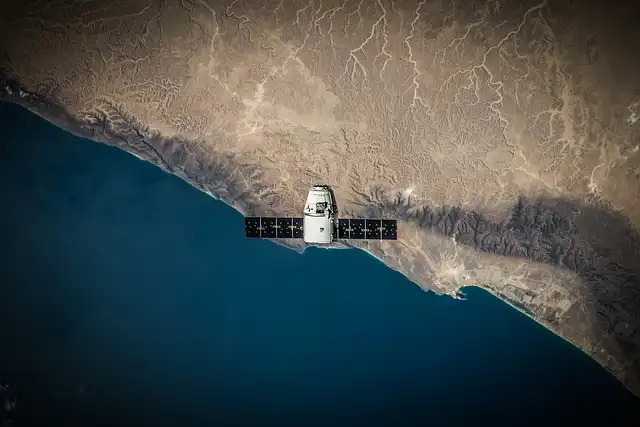‘Musk’s Starlink satellite internet costs 53% more over 30 years, maintenance twice as expensive’

The Trump administration is making changes to a $42 billion broadband subsidy program that will benefit satellite internet providers like Elon Musk’s Starlink, but some state and federal officials worry the technology isn’t robust enough to connect Americans on a mass scale and at affordable rates.
A change toward satellite usually converts right into profit for Starlink, which is one of 2 low-earth orbit satellite carriers that’s operational in the US right currently, with 7,000 satellites.
State and former government authorities, several of whom spoke with Bloomberg on the condition of privacy, defined mistakes with Business Secretary Howard Lutnick’s brand-new approach, which gives a lot more chances for satellite terminals that are originally cost-effective, however can set you back even more gradually. One state authorities shared inner data that revealed satellite service expenses customers 53% more throughout three decades. Satellite solution would additionally set you back more than twice as much to keep over that time structure, according the data.
Fiber, which entails stringing wire to a user’s home, costs at the very least $1,500 per location to mount, according to an evaluation shared by one state broadband authorities who asked not to be recognized. Costs can differ widely depending on where a home is situated and just how much existing infrastructure borders it, amongst other variables. Texas approximates it can develop fiber to a home for roughly $10,000.
The Trump administration’s adjustments to the $42 billion broadband aid program will certainly benefit satellite net service providers like Musk’s Starlink. State and former federal officials, numerous of whom talked to Bloomberg on the problem of anonymity, explained mistakes with Commerce Assistant Howard Lutnick’s brand-new approach, which offers more opportunities for satellite terminals that are originally low-cost, yet can set you back even more over time. One state official shared interior information that showed satellite service expenses consumers 53% more over the course of 30 years. Satellite solution would also set you back even more than twice as much to preserve over that time frame, according the data.
The Trump management’s changes to the $42 billion broadband aid program will certainly profit satellite net carriers like Musk’s Starlink. However, some officials wonder about the modern technology’s long-lasting usefulness and expense. The program’s shift to a much more tech-neutral method could delay fiber-optic jobs, influencing country America’s connectivity.
Any brand-new federal order that caps mention investing on fiber will certainly require states to renegotiate agreements and potentially delay the program by one more year to 18 months, a state official said. States like West Virginia and Missouri, which recently finished choosing infrastructure partners, would certainly be returned to the drawing board despite the fact that the former strategies to attach the whole state with fiber, and the latter will certainly reach the large bulk of the state with the technology while staying within their budget plans.
The Starlink system has actually expanded ever since and Musk has aggressive strategies to develop it out even additionally. But the saga left a remaining inquiry of whether the company is being reasonable regarding its abilities, according to an additional state official who asked not to be determined.
Federal and state officials have actually fasted to state they do not believe Starlink is inherently a poor business or that low-earth orbit satellite web isn’t great innovation. They just do not see it as the best solution for linking huge swaths of the country.
Ellis Scherer, among the paper’s writers, claimed that the team is generally hopeful that other modern technologies will certainly obtain a fair chance at competing for funding with the enhancement of affordable monetary guardrails. He suggested that $75,000 or more is excessive to invest in a solitary fiber area.
Arielle Roth, that is poised to shape the future of the BEAD program as the next nominated NTIA head, is scheduled to stand for a verification hearing on March 27 where her policies will take center stage. Roth has publicly criticized the program and said it ought to be technology neutral.
Fiber can attaining one gigabit upload and download rates, enough to stream high-def videos on numerous devices, transfer huge files and run virtually a dozen clever home gadgets simultaneously without any buffering. Starlink’s basic home service offers 100 megabits per second download and 20 mbps upload speeds– the Federal Communications Commission’s baseline for contemporary web rates– which is typically sufficient to sustain some high-quality streaming across a number of devices and fast documents downloads.
“There are numerous satellite business that are capable of providing broadband today,” stated Tom Stroup, president of the Satellite Industry Organization. “We’re hopeful that the exams that are underway will make multiple satellite business qualified for funding.”
In the meanwhile, states are left in a holding pattern, with numerous incapable to begin constructing accepted projects up until regulators in Washington validate their last budgets. Others are left questioning whether they need to proceed selecting infrastructure companions in the middle of the uncertainty.
Under the initial plan, satellite providers were typically just allowed to compete to supply gain access to if the cost of installing fiber exceeded a specific expense per area, a limit states were allowed to identify themselves. Louisiana, as an example, is prepared to spend as long as $100,000 on a solitary fiber connection.
State leaders likewise like fiber projects for their local financial impact. Whereas satellite infrastructure focuses economic development in manufacturing facilities, fiber constructs rely upon employees inside an area to set up and preserve the networks.
As a last missive in his old role, Feinman sent out an email to coworkers cautioning that the Business Department gets on a collision course to “stranding all or component of country America with worse net to make sure that we can make the globe’s wealthiest male also richer.”
A change toward satellite generally converts right into profit for Starlink, which is among 2 low-earth orbit satellite suppliers that’s functional in the United States right now, with 7,000 satellites. The various other, Eutelsat Communications SA’s OneWeb, has 630 satellites in orbit. Amazon.com Inc.’s Task Kuiper plans to release its initial satellites later this year and emerge as another competitor, although the company has actually faced recent problems to its rollout. The Wall Street Journal reported that Starlink is in line to get $4.1 billion under the present Biden-era grain regulations, but that an adjustment to favor more satellite usage can steer $10 billion to $20 billion to the firm.
Starlink used several years ago for virtually $900 million in subsidies from the FCC’s Rural Digital Chance Fund, yet was refuted because the agency discovered Musk’s firm had not revealed it can satisfy the requirements to deploy a network of the scale required.
Lutnick stated just recently that he was examining the grain program, which was approved by Congress in 2021, because of the previous management’s “preference in the direction of specific innovations.” Lutnick’s department, which additionally pointed out a lack of development in turning out the solution, is overhauling the initiative to give it a much more “tech neutral technique” that will certainly provide web access “at the most affordable expense to taxpayers,” according to a statement from his workplace.
However Starlink’s satellites need changing every 5 years, making their complete cost to customers a lot greater over time, according to the state analysis. Fiber’s general cost to offer a quarter-million homes is roughly $4 billion much less than satellite solution over three decades, according to the state analysis, and would conserve a private home $15,600 over the exact same duration.
The adjustment is elevating red flags amongst some state broadband leaders that distribute the government aids, and former authorities at the National Telecommunications and Info Administration, the Business branch leading the effort.
The Biden administration’s vision for the Broadband Equity and Gain Access To Release Program (BEAD), designed to supply fast, dependable home net solution to every US house, leaned greatly on fiber-optic lines, a modern technology that’s costly to install yet can last for decades. The change towards satellites is an outcome of substantial lobbying by Musk and has actually obtained Republican assistance, including from Senate Business Committee Chairman Ted Cruz.
“There does not seem to be a clear understanding of the distinction in these technologies, neither in the lasting impacts of making one selection versus one more,” stated Evan Feinman, the former director of the broadband program under Biden, that left the Business Department this month.
Satellite solution was constantly expected to “be a huge part of the program and a necessary part of the program,” said Alan Davidson, the former NTIA head who managed the Biden administration’s rollout of the program. “We just wanted to offer states the adaptability to pick just how much.”
The not-for-profit Information Technology and Innovation Foundation stated in paper released in January that states might give less costly solution in several locations with Starlink, and it suggested fiber spending shouldn’t go beyond $1,200 per place– two times the cost of a Starlink terminal at the time.
Lutnick is mulling whether to remove that discernment and set a national standard, Feinman claimed, among other alternatives for reforming the program. Any kind of formula that highlights the lowest first price to the government will rely heavily on satellites, state and federal authorities stated.
“The grain program is being spruced up to take a technology-neutral method– a required repair from the previous management’s one-size-fits-all approach,” stated a speaker for the National Telecommunications and Details Management, which is in charge of the program. “As opposed to putting a thumb on the scale for a particular innovation, the BEAD program will be carefully driven by end results, so states can give net access for the lowest expense.”
There are various other factors the initial grain program favored fiber networks. Fiber delivers broadband at reduced latency degrees than satellites, which can suffer from network blockage and environmental interference, according to the state information.
The Trump administration is making changes to a $42 billion broadband aid program that will certainly benefit satellite internet suppliers like Elon Musk’s Starlink, however some state and federal officials worry the modern technology isn’t durable adequate to attach Americans on a mass scale and at inexpensive prices.
1 Application Programming Interface2 BEAD program
3 satellite broadband
« Gopal Vittal elected as new Chairman of GSMA boardAlcatel-Lucent Enterprise unveils Private 5G solution with Celona tech »
